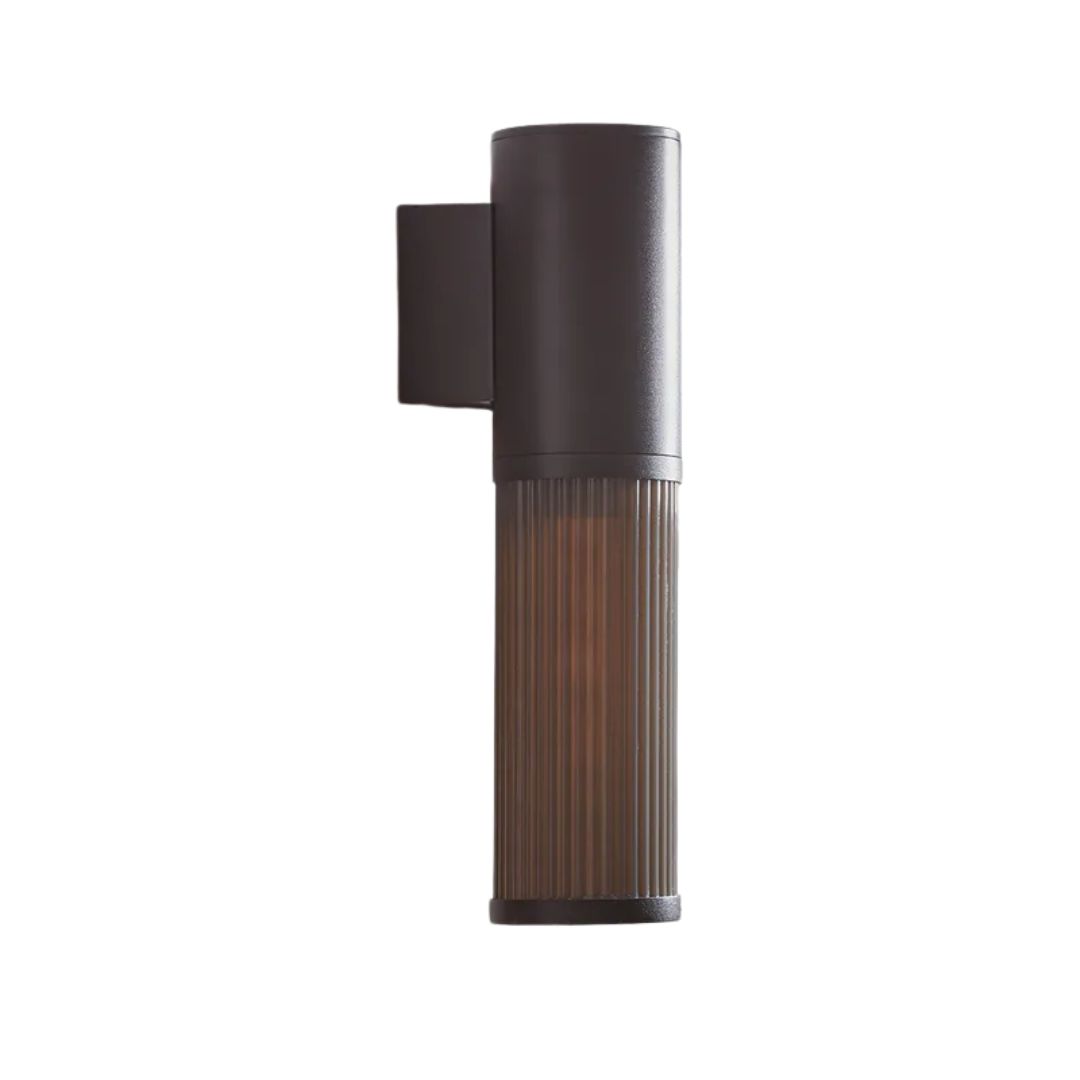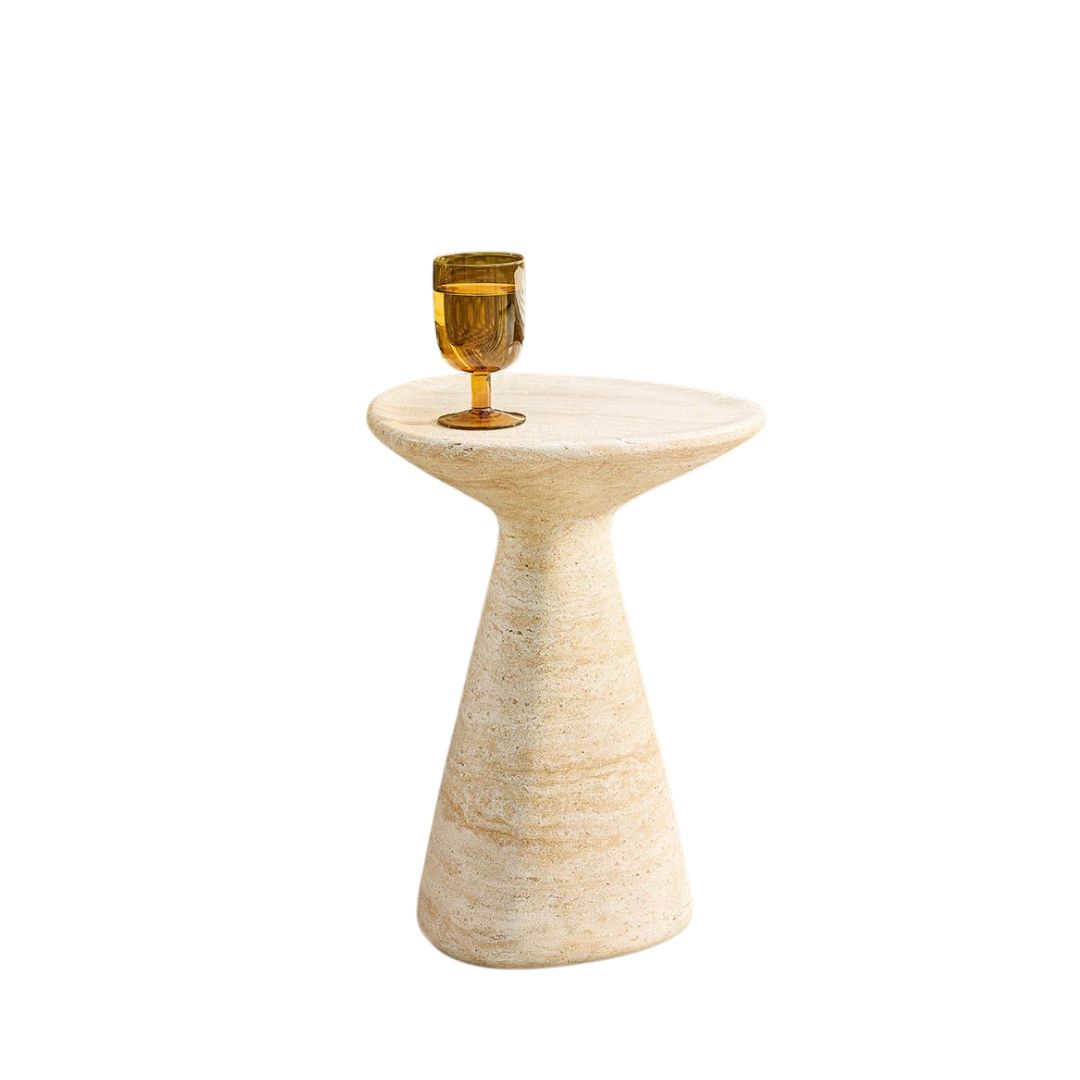How Can I Make My Small Garden Look Expensive? 6 Luxurious Little Details That Make a Difference
From little things that add a touch of luxury to big things that make a grand statement, these are the best designer tricks to give your garden a high-end feel
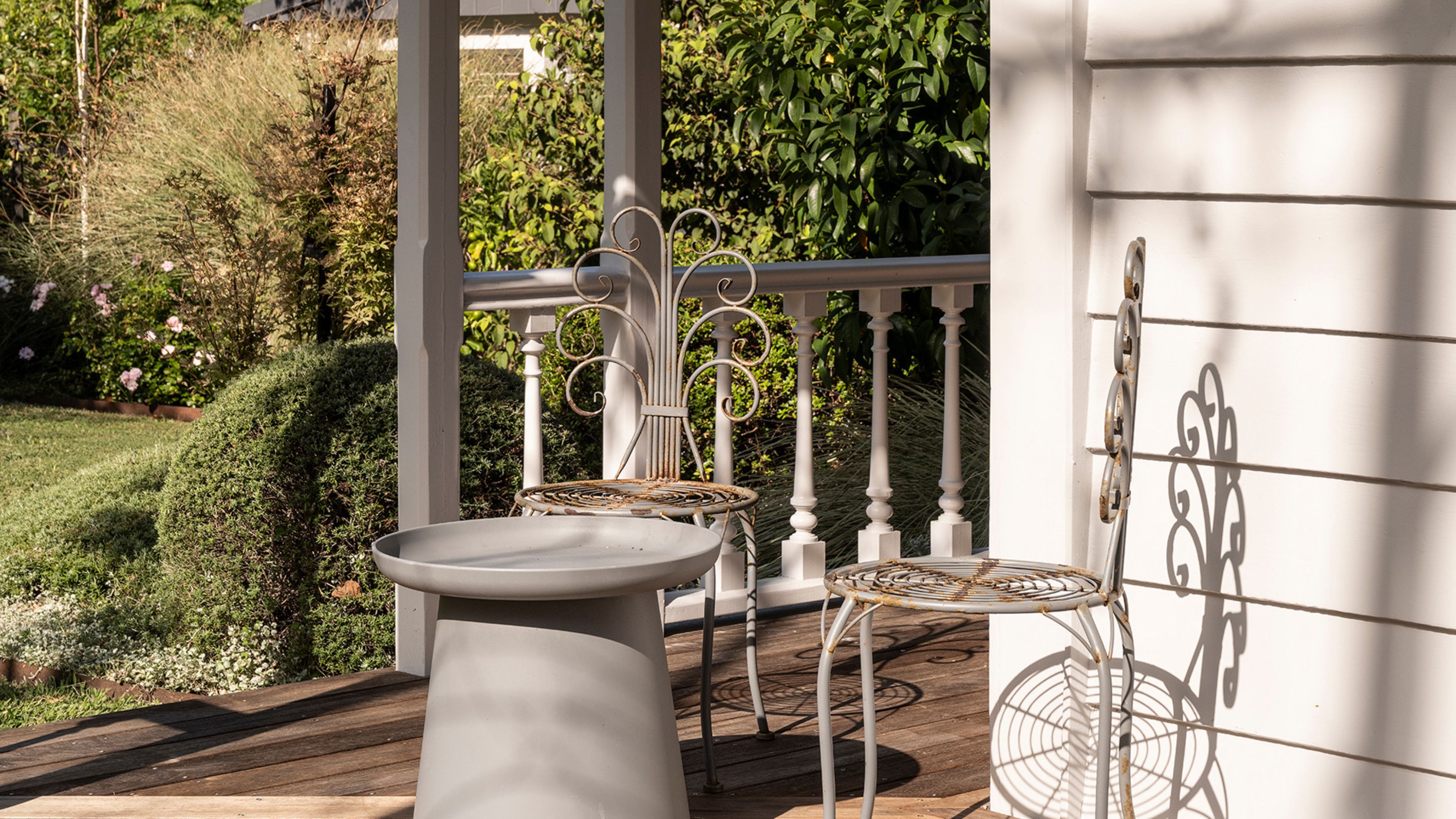
Creating a luxurious feel in a small yard is all about curating a look. This means having an aesthetic, and sticking to the plan to ensure that everything looks harmonious. It can be as easy as simply having fewer things to let in some space, and instead adding one statement piece that truly deserves to be highlighted.
Soft landscaping is an essential component of the design if you're looking for ways to enrich your space. This offers a good balance between greenery and hard surfaces, and contributes to an overall feeling of luxury. Layering up lush and textural planting can create a sense of opulence, as a well-planted space adds to the richness of any small garden ideas.
If there's one thing garden designers agree on it's to make sure that your landscaping ideas follow a restricted palette of quality materials when it comes to things like hardscaping choices and furniture, and that your design is appropriate to the style of the property.
1. Opt for a Less Is More Approach
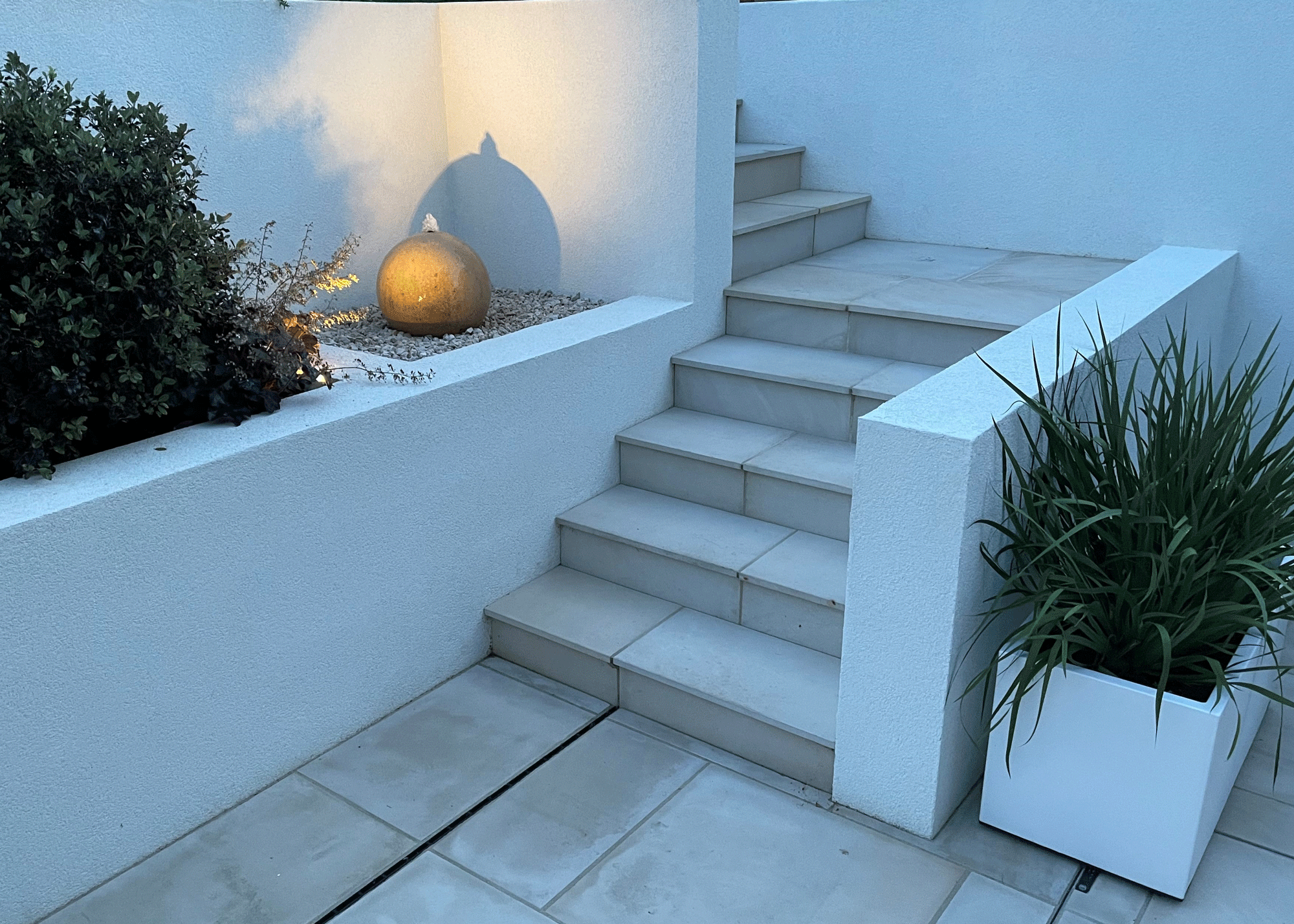
A minimal design lets you streamline your choices for a more expensive look.
"If you're deciding how to make your small garden look expensive view the design as an overall composition," says landscape designer Marlene Lento. "Add a clear main feature, a few secondary and tertiary features in terms of visual prominence, and lots of repetition or mass planting of smaller plants. Less is definitely more if you want your small garden to look refined and elegant."
This design is a small rear garden whose owners wanted to transform it into a light, open, contemporary outdoor space. The new design increased the depth of the patio and created raised rendered beds at various levels, one of which integrates a small water feature. The clean, crisp hardscaping in cool neutrals adds a luxe element.
Evergreen planting always adds an expensive-looking detail to the planting design. "Small gardens can usually be seen easily from the house," adds Marlene. This makes quality detailing especially important for hard landscaping and the precision with which the garden is manicured. Since this design is constantly on view from the house, the planting scheme is almost exclusively composed of evergreen shrubs and architectural plants for winter gardens to add year-round interest."

Marlene has over 25 years' experience in designing and delivering projects around the world. A background in both landscape design and interior architecture has provided her with a deep understanding of how we use and perceive spaces, and how buildings and gardens interact harmoniously to reflect the individual style of the owner. She is an award-winning designer and registered member of the Society of Garden and Landscape Designers.
2. Include a Stylish Water Feature
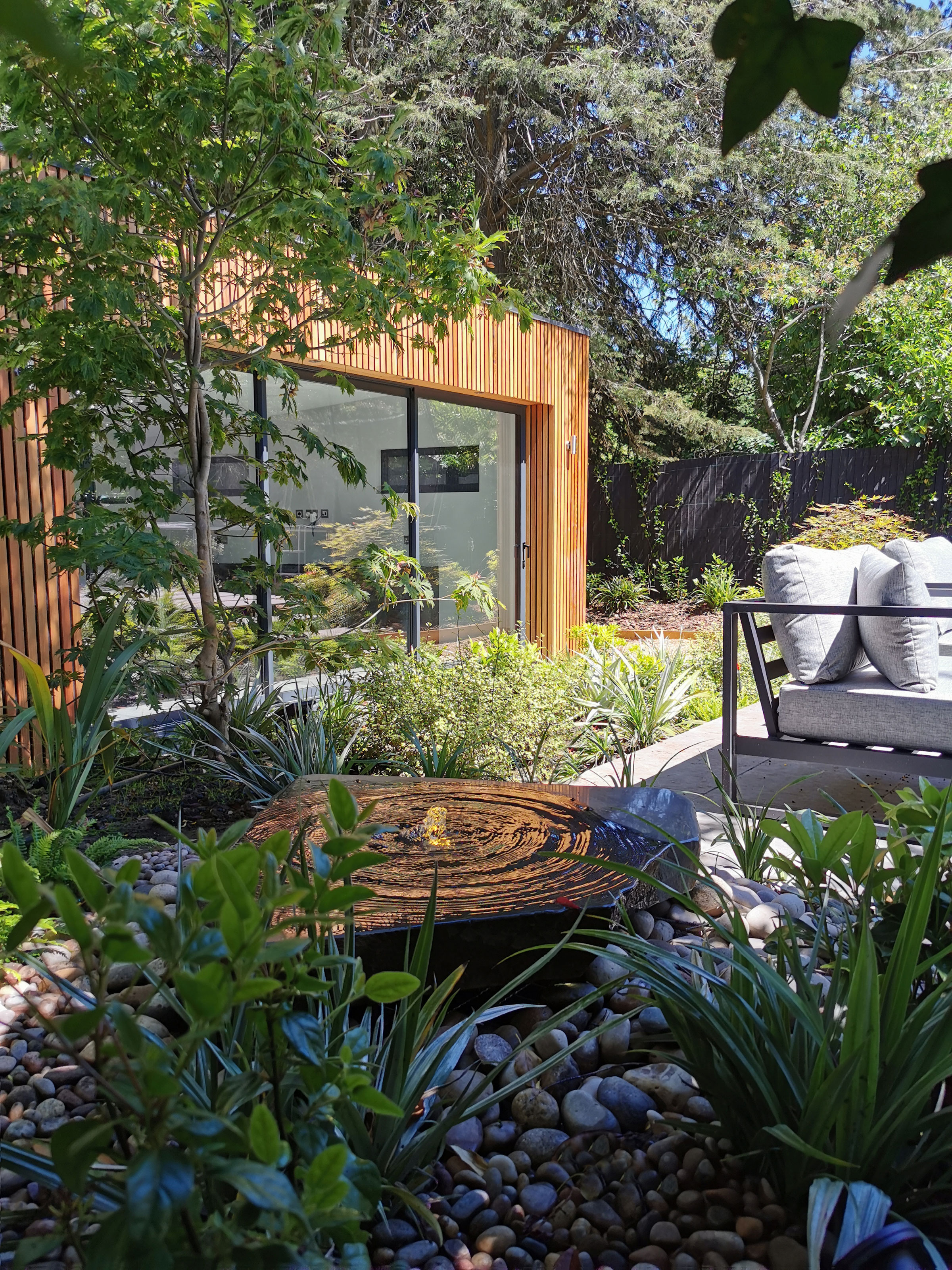
This small but perfectly formed water feature is a thing of beauty.
Any distinctive garden design using water will instantly create a memorable feature when you're looking for ways to make your small garden look expensive. Even better if you use high-end materials like Corten steel for your water garden ideas and include the soothing sound of running water.
"A subtle introduction of a detail, texture, or material can bring an authentic sense of richness during design development," says landscape architect Justin Quinn, co-author of Intersection of Nature and Art and partner at JDDA. "We enjoy incorporating bold features that make each project unique."
It's also a way of making a small garden look bigger. "A dramatic focal point creates interest and intrigue as part of your design. Scaled appropriately, a water feature, like a rill, trough, or pool, can make the space feel larger."

Justin Quinn received a Bachelor of Science in Landscape Architecture from the University of Connecticut, earning the Connecticut American Society of Landscape Architecture’s Honor Award for design and technical coursework. After ten years with James Doyle Design Associates, he's now a Partner and Principal of the firm. He has led many award-winning projects and co-wrote JDDA’s monograph ‘Intersection of Nature and Art’.
3. Combine Luxury With Functionality
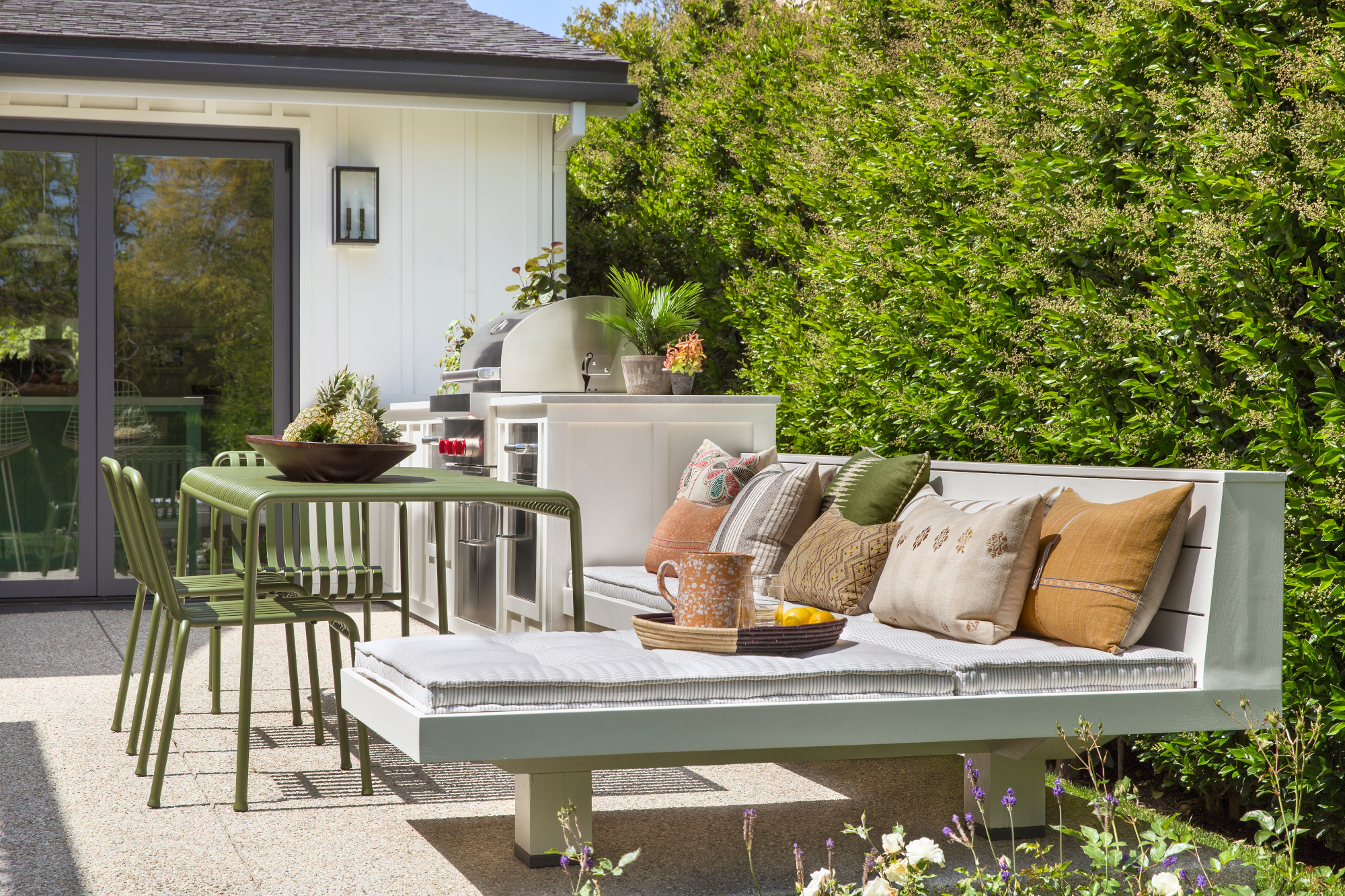
Throws and cushions add a luxurious touch that will make a space feel more opulent.
“Our clients often ask us to curate a luxurious yet functional outdoor living area, which can be challenging when working with limited space," says Lowri Allpress, owner and director at Jo Alexander. "The challenge lies in designing an area that can accommodate dining, entertaining, and relaxing, without compromising on luxury and comfort.”
Modular teak outdoor sofas like this one have a unique advantage as they can be configured to suit the specific layout of even the smallest of gardens, providing a made-to-measure set-up for each space, explains Lowri. "By incorporating corner and mid-sections, these sofas fit seamlessly into small gardens, creating an elegant look without overcrowding the space.”
Combined with a large coffee table, it's just perfect for creating a high-end outdoor entertaining experience that's on a par with indoors. "Made of A-grade materials, this collection makes a statement piece that will give years of enjoyment," says Lowri. "For our clients, it became the centre of a lavish outdoor retreat in their limited garden space.”

Lowri Allpress is the Founder of Jo Alexander, working alongside her husband and co-founder Jolyon, to bring timeless outdoor furniture to life. Together, Lowri and Jo’s shared commitment to sustainable craftsmanship ensures every piece is thoughtfully chosen to elevate outdoor living, season after season.
4. Stick With a Stylish Neutral Color Palette
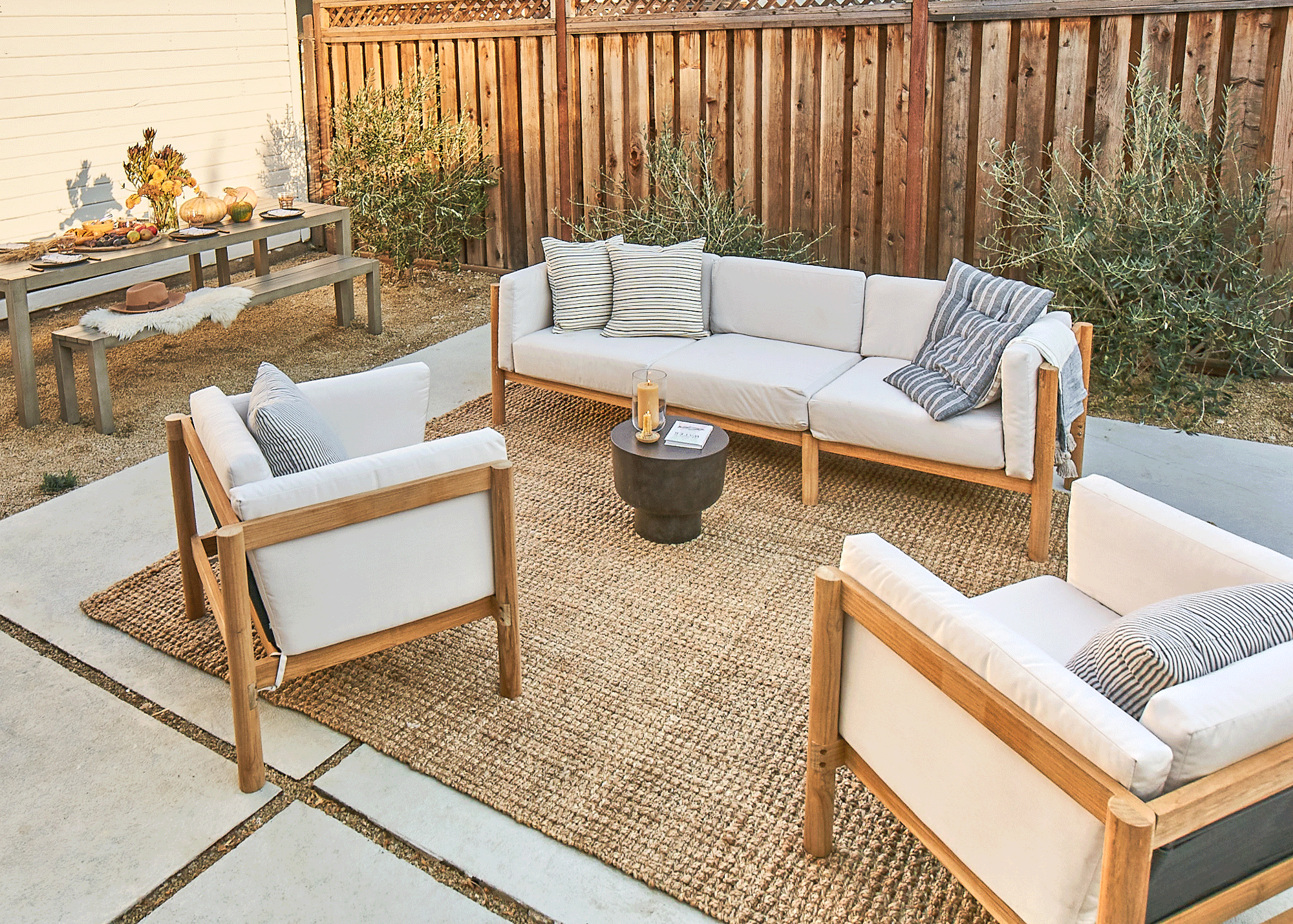
Pared-back choices are the way to go.
Choosing natural materials and colors is a key element when considering how to make your garden look more expensive. The classic neutral color palette of cream, tan and taupe, with the introduction of gray and earth tones here and there, elevates the look and adds a certain richness, while at the same time giving the impression of being closer to nature. All in all it's super soothing too.
"This small yard leans into a palette of warm neutrals with tan gravel, a natural fiber outdoor rug, and honeyed wood tones in the fencing and furnishings," says Yardzen design director Kevin Lenhart. "Maintaining this kind of aesthetic consistency establishes a sense of cohesiveness and makes a space feel designed, regardless of its size."
Keeping to a neutral color palette will elevate the look of the overall design, as will following the principles of clean lines and simple forms when considering modern outdoor furniture ideas. Stick to a simple, no-clutter approach and pare back on accessories, just adding what's absolutely necessary (see next point — one is fine!).

Kevin Lenhart is Yardzen's Design Director. He received a M.S. in Landscape Architecture from the University of California, Berkeley. Prior to Yardzen, he worked for San Francisco's Department of Public Works and for WRT. He's passionate about outdoor spaces that are beautiful, do good for the planet, and get families outside.
5. Invest in Just One Statement Piece

This gently contoured wall by garden designer Miria Harris is built from sustainable hemp blocks and finished with tactile lime render. The curved design offers a cocoon-like space for enjoying the garden.
Investing in a good quality focal point adds an instant touch of class and makes a garden look more expensive. This can be anything that appeals, from an eye-catching piece of sculpture or garden art to huge planted container gardening ideas or a simple staged boulder.
Alternatively you can make it an actual part of the design. Consider adding an unusual wall like this curved beauty or other hard landscaping feature such as a small pool or rill.
A well-chosen focal-point adds to the sense of place. The benefits of an 'installation' are many, helping to direct the eye, frame a view (or divert the attention from one), an end destination in itself or simply a conversation point. Even better if your statement piece is lit to add nighttime definition and drama.
6. Light the Garden at Night to Make Everything Look More Opulent
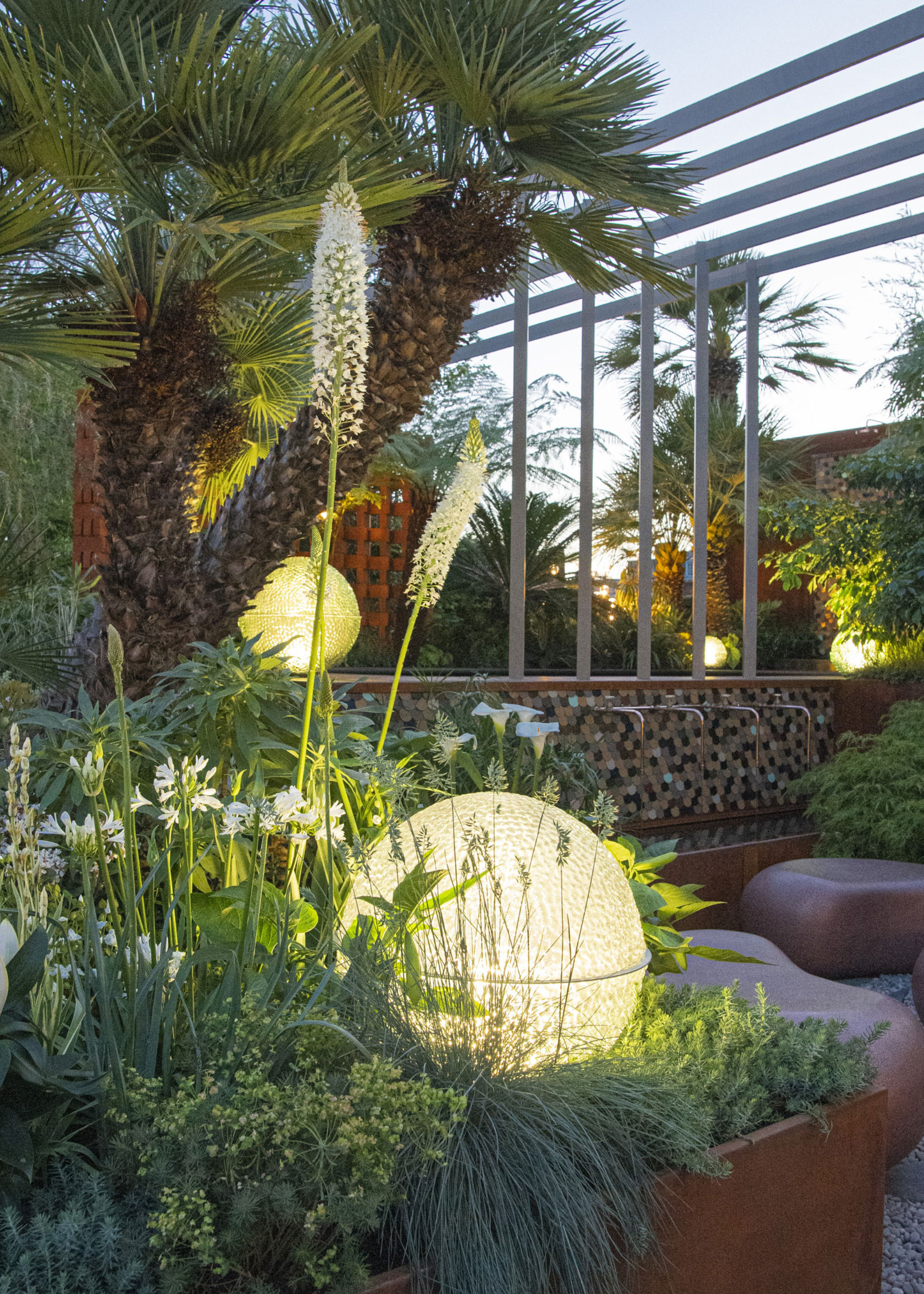
Garden designer Kate Gould uses large hand-shaped glass spheres by Catellani and Smith as sculpture highlights in the day that come into their own at night when they light up the garden.
Last but not least, add lighting. It's one of the easiest ways to make your small garden look expensive. After all, nothing says luxury more than finding yourself in a beautifully lit garden at night. Use modern garden lighting ideas to choose a look that works for you and will illuminate the space best.
One of the favored designer tricks is to light plants, which take on dramatic architectural qualities when uplit, especially against a wall. "Uplighting is created by placing a light source directly underneath features. It is particularly effective when used with shrubs and trees with an interesting internal structure, such as intertwining branches," according to landscaping experts Rosemary Alexander and Rachel Myers, co-authors of The Essential Garden Design Workbook. "When used in winter through bare stems and branches, the effect is especially dramatic."
They also suggest trying moveable spotlights, highly versatile fittings that can be placed anywhere in the garden, provided their cables are long enough. The most useful versions are either mounted on spikes for easy insertion into the ground or incorporate a simple clip for fixing to items above the ground, such as trees and fences.
FAQs
What Adds the Most Value to a Small Garden?
"I would say that a timeless garden with good evergreen structure and mature specimens that provides a proper ‘garden view’ from the house is what most people are drawn to," says Marlene Lento. "Such gardens resist following fads. Instead, the landscaping follows a limited palette of quality materials that age well and that respond to the style of the house. This gives a design longevity."
The best gardens always have year-round interest, adds Marlene. "This consists of a fine balance of evergreen foundation plants mixed with plants that provide multi-season interest and allow you to observe the passing of the seasons, and the occasional plant that pops up for sheer exuberance and delight, even if this is brief."
Now you know all about ways to make your small garden look expensive, find out what landscaping project will add the most value to your property (there are five all altogether!), as well as things people with expensive-looking front yards have that you can achieve on a budget. Happy landscaping.
Be The First To Know
The Livingetc newsletters are your inside source for what’s shaping interiors now - and what’s next. Discover trend forecasts, smart style ideas, and curated shopping inspiration that brings design to life. Subscribe today and stay ahead of the curve.
Lifestyle journalist Sarah Wilson writes about flowers, plants, garden design and trends. She has studied introductory garden and landscape design and floristry, and also has an RHS Level 2 qualification in the Principles of Plant Growth and Development. In addition to homesandgardens.com and livingetc.com she's written for gardeningetc.com, Real Homes, Modern Gardens and Country Homes & Interiors magazines. Her first job was at Elle magazine, during which time a trip to the beautiful La Colombe d'Or in St-Paul-de-Vence led to an interest in writing about all things botanical. Later as lifestyle editor at Country Homes & Interiors magazine the real pull was the run of captivating country gardens that were featured.
-
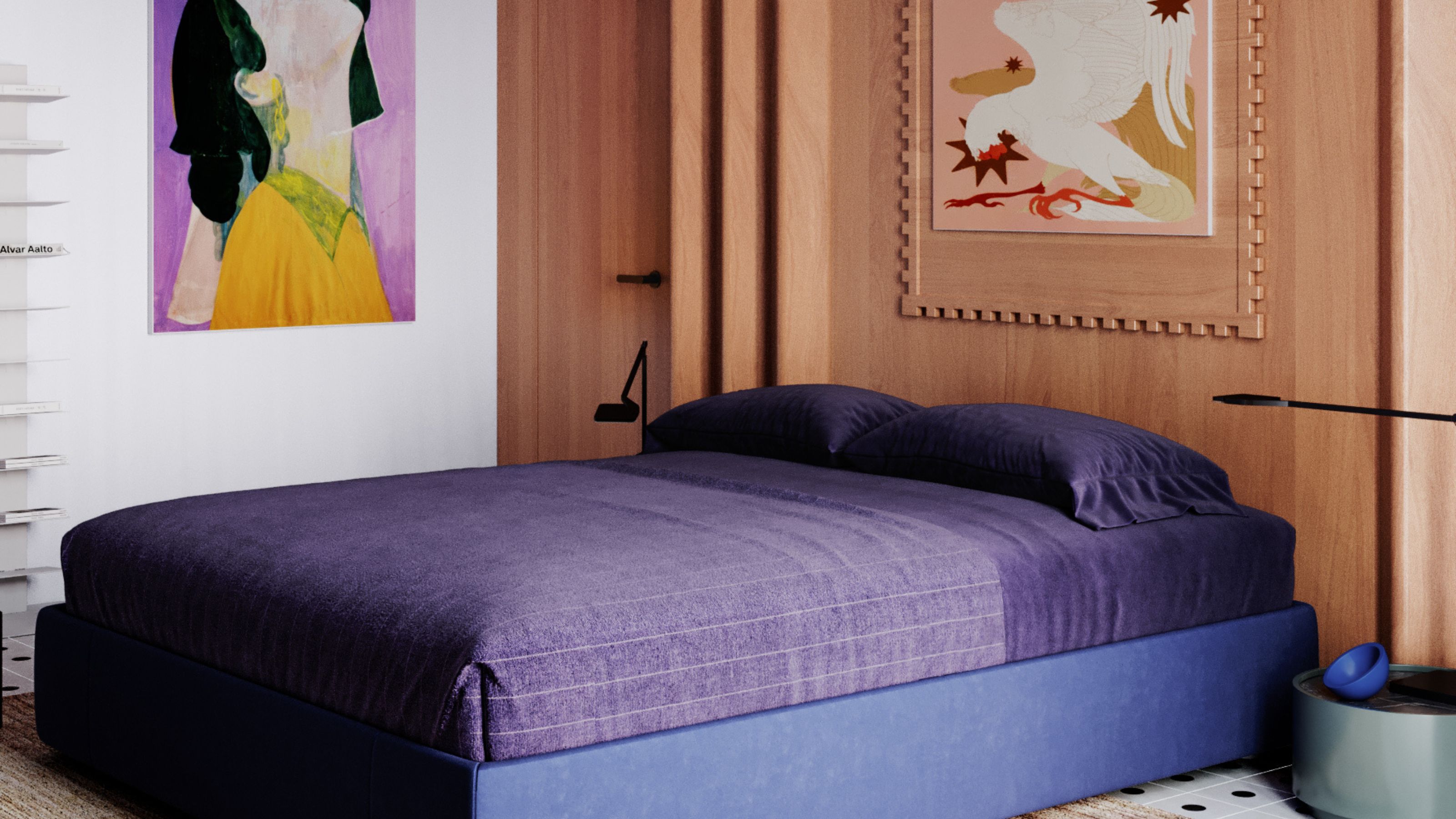 It's a Color Symbolic of Dreams, so These Purple Bedroom Ideas Almost Guarantee a Good Night's Sleep, Right?
It's a Color Symbolic of Dreams, so These Purple Bedroom Ideas Almost Guarantee a Good Night's Sleep, Right?Not always an obvious choice for the bedroom, these designs prove that purple has restful and calming qualities, making it perfect for the bedroom
By Oonagh Turner
-
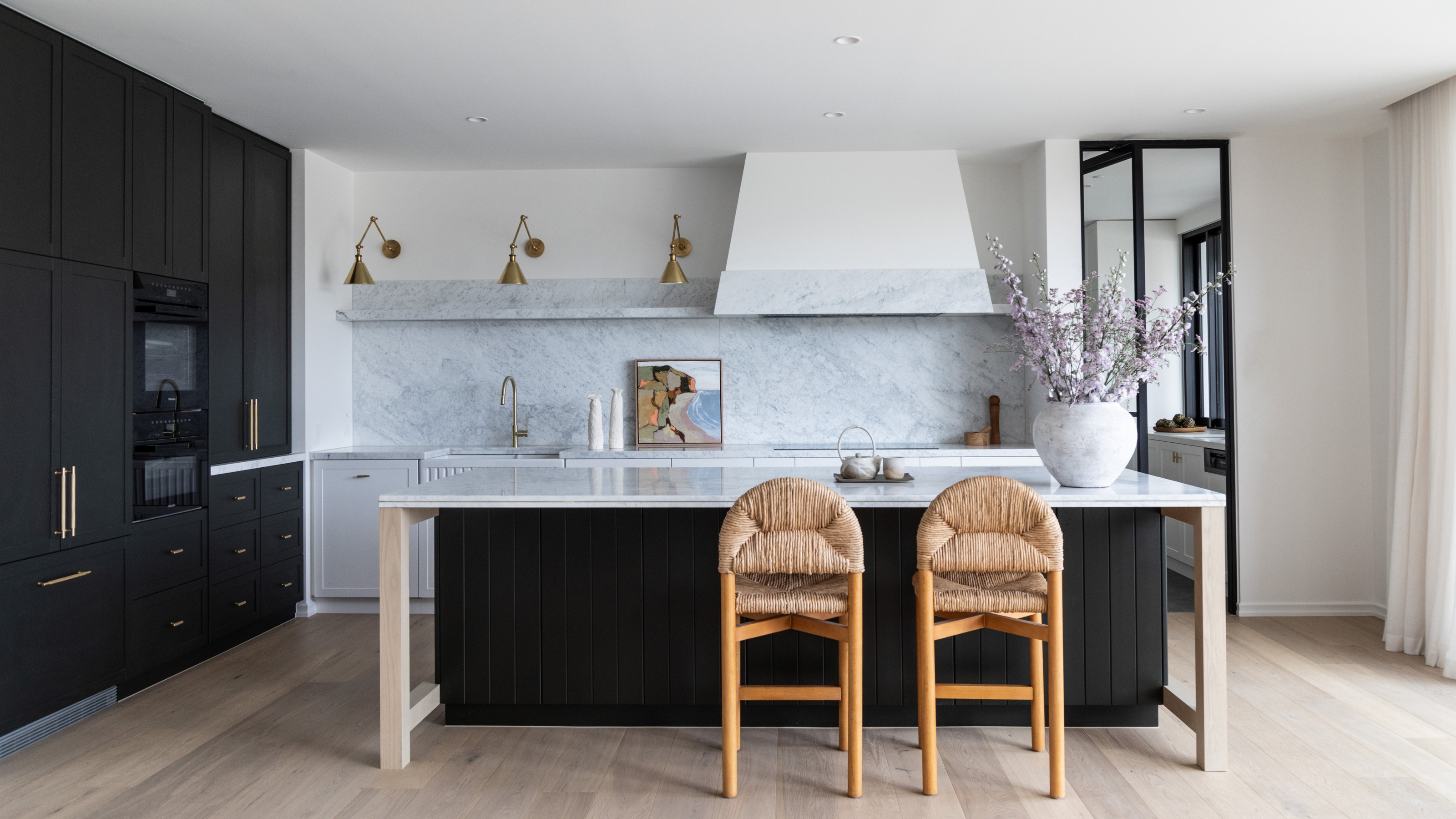 4 Kitchen Island Measurements That the Best Designers Always Use When Planning Spaces
4 Kitchen Island Measurements That the Best Designers Always Use When Planning SpacesYour cheat-sheet guide to getting clued up on all the basics of island measurements, straight from the experts.
By Maya Glantz

